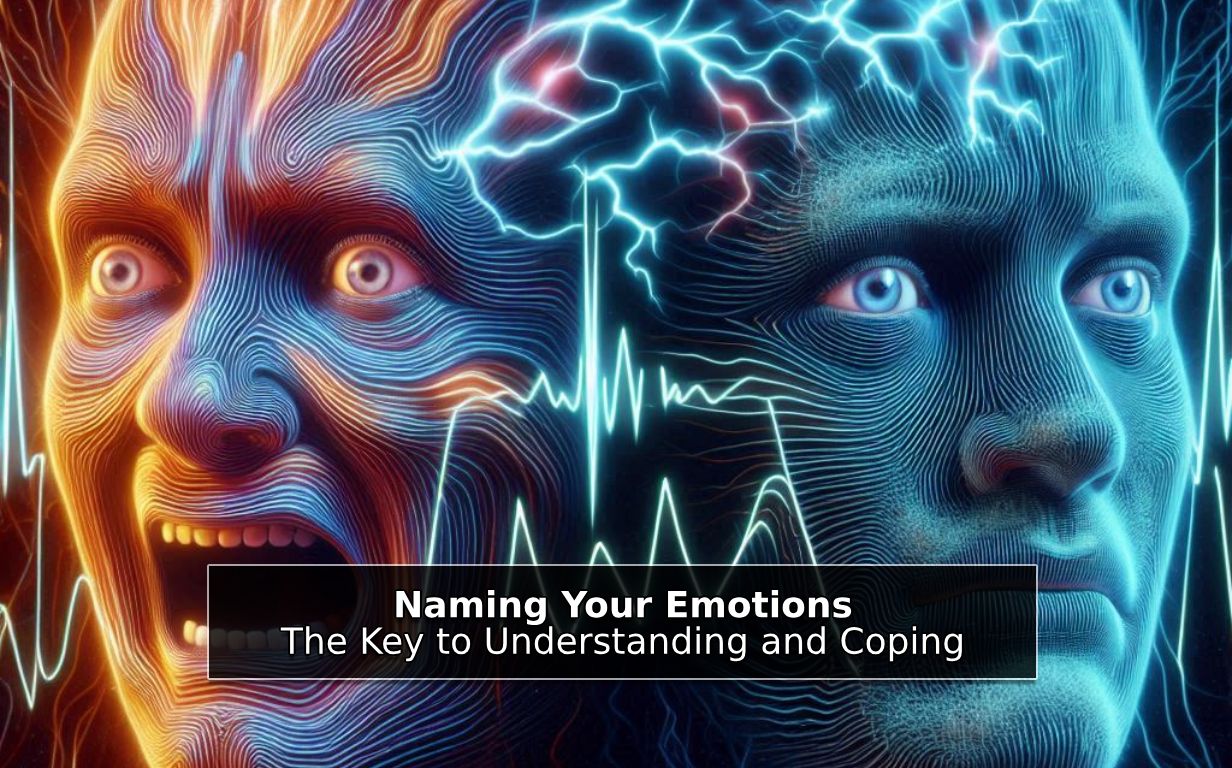Naming Your Emotions: The Key to Understanding and Coping
Have you ever felt overwhelmed by strong emotions that you just couldn't put a name to? Feelings of confusion, helplessness, and even fear can consume us and hold us back from moving forward in life.
The good news is that there's a more effective way to manage these emotions. Research has shown that giving a name to the emotion you're experiencing is a significant step towards understanding and coping with it.
What happens in the brain when we name an emotion?
When we experience a strong emotion, the part of the brain responsible for emotions becomes highly active. However, when we give a name to that emotion, brain activity shifts to the area responsible for thought and language. This shift allows us to create a distance between ourselves and the emotion, as if we were observing it from the outside.
Imagine it like surfing: When you're riding a huge wave, you're an inseparable part of it. But if you look at the wave from the shore, you can see it clearly and understand its movement. It's the same with emotions: when we give them a name, we create psychological distance and allow ourselves to understand them better.
Let's say you're feeling a knot in your stomach before an important presentation. Instead of telling yourself, "I'm so nervous," try saying, "I'm feeling physical discomfort in my stomach, a sense of anticipation, and anxiety." By giving a specific name to your feelings, you're breaking down the big, scary emotion into smaller, more manageable components.
How does this help us cope?
- Recognition: Naming an emotion allows us to acknowledge it and understand its nature.
- Regulation: Once we've identified the emotion, we can choose how to respond to it in a more effective way.
- Communication: Naming an emotion allows us to communicate our needs and desires more clearly.
- Growth: Coping with difficult emotions is an opportunity to grow and develop.
Cognitive Behavioral Therapy (CBT) and Acceptance and Commitment Therapy (ACT)
Therapies like CBT and ACT teach us how to use various techniques to identify and manage our emotions. These therapies emphasize the importance of naming emotions and provide practical tools for everyday life.
For example, in CBT, we learn to identify automatic negative thoughts associated with an emotion and challenge their validity. In ACT, we learn to accept our emotions as they are, without trying to change them, and focus on meaningful actions in life.
Supporting Research
Dr. Daniel J. Siegel, a psychiatrist and brain researcher, coined the term "Name it to tame it" to describe the process of naming emotions. Numerous studies support this approach, showing that identifying and naming emotions is linked to reduced stress levels, improved mental health, and increased emotional resilience.
Many studies support the idea that naming an emotion helps us cope with it. For example, a study published in the journal Emotion found that people who were asked to describe their emotions in specific words experienced less emotional intensity and were less likely to react impulsively.
In Conclusion
Naming an emotion is a simple yet powerful step that can significantly improve our quality of life. By acknowledging our emotions and giving them a name, we can understand them better, cope with them more effectively, and move forward in life.
Important note:
It should be noted that the post is for informational purposes only and should not be used as a substitute for professional advice. The information presented in this post is based on scientific studies and my professional experience as a cognitive behavioral therapist. However, it is important to understand that each person is unique and dealing with emotions is a personal process.
Sources:
- Barrett, L. F. (2017). How emotions are made: The secret life of the brain. Houghton Mifflin Harcourt.
- Hayes, S. C., Strosahl, K., & Wilson, K. G. (2012). Acceptance and commitment therapy: The process and practice of mindfulness. Guilford Press
- Siegel, D. J. (2010). Mindsight: The new science of personal transformation. Bantam Books.
- Hayes, S. C., Strosahl, K., & Wilson, K. G. (1996). Acceptance and commitment therapy: An experiential approach to behavior change. Guilford Press
Contact now
Ready to take the first step towards positive change? Contact me now for more information and to schedule an appointment. Whether you prefer in-person sessions in Tel Aviv or virtual meetings via Zoom, my integrated approach of Cognitive Behavioral Therapy (CBT) and Acceptance and Commitment Therapy (ACT) can help you break free from struggles and find greater fulfillment in life. I'll be sure to get back to you as soon as possible. Let's embark on this transformative journey together!
Call Whatsapp 052-2325511
Or fill out the following form.
Can ACT and CBT assist you or your loved ones?
Welcome to my therapy practice, where I offer a powerful combination of Cognitive Behavioral Therapy (CBT) and Acceptance and Commitment Therapy (ACT) techniques. CBT is a goal-oriented, short-term approach that's highly effective for anxiety, depression, low self-confidence, and more. ACT complements CBT, helping you navigate life's challenges and find fulfillment and authentic, happier life.
If you're struggling with anxiety, depression, low self-image, or facing setbacks, CBT combined with ACT may be the key to transforming your life. Break free from the struggle and take a step towards a happier, more fulfilling life.
Contact me today to schedule an appointment and embark on your journey of positive change. You don't have to face it alone; I'm here to support you every step of the way. Let's work together to create the life you deserve!





